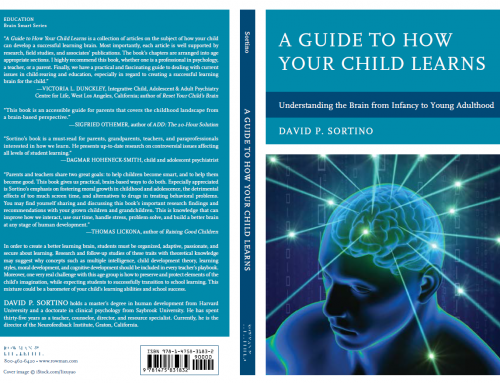There is only so much a teacher can do to increase greater learning potential with their students. No matter how great a teacher’s ability or creative lessons, the bottom line is that students and parents must step up for greater learning potential to be tapped. Drawing on the work of Dr. Howard Gardner’s multiple intelligence theory, I hope to convince you (parents/guardians) that Gardner’s theory can become the training wheels to help parents deal with the many challenges that affect student learning and school success.
The first of many teaching challenges are the differences in how their students learn. Parents see learning differences with their kids all the time — especially around homework time. One child has no problem with homework and the other child has you pulling your hair out just to get them to complete 15 minutes of homework. A major reason why there are such differences can be the result of cognition or how they think, or take in new information. For example, a group of 5th graders are presented with 5 pictures: cow, horse, robin, bat, hawk and asked to divide the animals into groups. Most 5th graders would say walking and flying or feathers and fur, but only a small percentage see that the bat is a mammal and not a bird, and so this group divides the animals according to species, which is an abstract thought, not black and white or walking and flying. The ability to classify a species requires higher order thinking because students must process more ideas or information at one time. When the teacher tested the same 5th grade students some five weeks later, some of the students still divided the groups into walking and flying. What has occurred is that some student’s were not ready to define mammals by species because the lesson required students to reason abstractly, not just two ideas, as in walking and flying but instead three — the bat is a species, called a mammal, that also flies. Not surprising, student’s problem solving abilities are different at different ages and which is why we teach advanced information at each higher-grade level. For example, why 4th and 5th graders struggle with long division is because it requires skill (times tables) and four operations. According to Gardner this inability is not entirely a matter of how smart students are but how are they smart. He theorized that humans have a particular intelligence that helps us to be successful in everyday life (math, linguistic, interpersonal, intrapersonal, spatial, musical, kinesthetic, and naturalistic). Further, he believes that most school curriculums and even IQ tests are slanted toward the math, linguistic, and logical intelligence’s. “Tommy fix-it” who might have trouble in reading and math shows genius ability when you need something repaired is only doing what his intelligence knows best — demonstrating his kinesthetic or hands-on ability. Most teachers use Gardner’s theory in their lessons in one way or another and there are schools such as Waldorf, Montessori, International Baccalaureate that tie in the different intelligences to facilitate learning.
Therefore, the solution lies not (entirely) with our schools or teachers but with the home, or for parents to step up and investigate, or better yet, run to the nearest bookstore. When you identify How the child is smart, learning can become a 24/7 awareness for both child and parent alike.
David Sortino,Ed.M,Ph.D.holds a Master’s Degree in Child Development from Harvard U. & Doctorate- from Saybrook in Clinical Psychology; davidsortino@comcast.net or at 707-480-1649,


